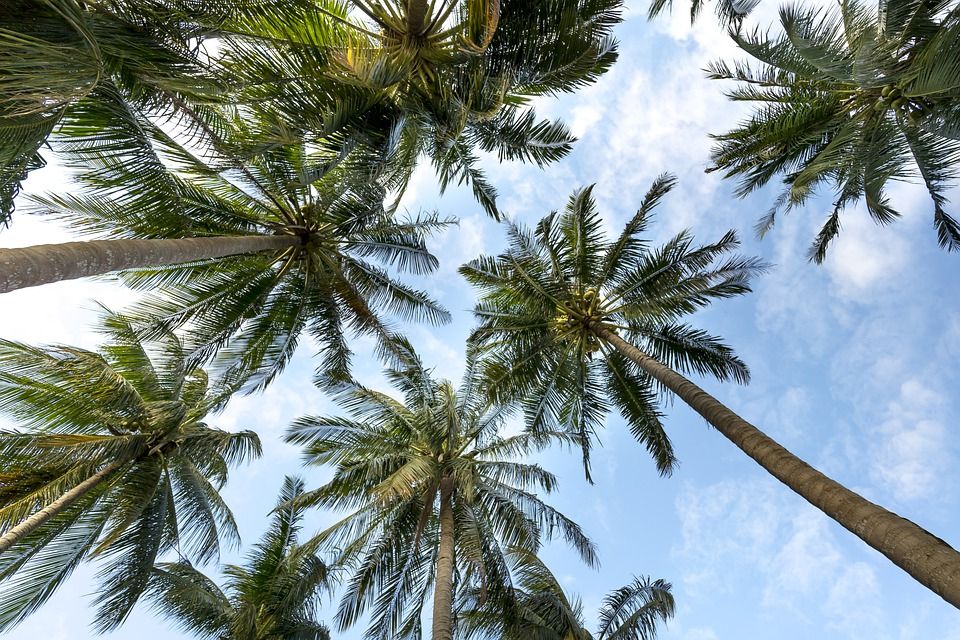
Arbor-wellness: Keeping Palm Trees Healthy
Most pictures of California include palms in the skyline. They have become an iconic symbol of the state. There is even one California based fast food company that feature palms in their logo and at all of their sites. The taller palms are easy to see in the skyline and remind us of sunny days and warm breezes.
For the most part palms seem to be easy to grow. They grow quickly, are fairly drought tolerant and handle most of our weather variances well. However, they do need maintenance and – in many cases, protection – from certain diseases and insects.
While we classify palms as a type of tree, they are very different from shade trees or evergreen conifers. They are actually closer related to grasses and as such, have very different needs than most other trees.
With palms it is important to make sure they are planted correctly. They need well drained soil, to be planted at the right depth and with enough space for their roots. Palm roots don’t extent too far though so smaller planters are acceptable for them. However, they will still need some water so the planter needs to allow for them to be watered when needed.
They also need regular fertilizer. Most of our soils in a city environment do not contain the components necessary for a palm to truly thrive. Palms receive a bulk of their nutrients from a very small area, so that area needs to be replenished on a regular basis. For most palms, feeding twice a year with a natural fertilizer blended especially for palms should be adequate. For larger palms like the Canary Island date palm, three times a year is recommended.
Watering is critical, but it also depends on the soil type and the drainage. IF your soil is sandy and drains well, watering every four to six weeks is usually adequate for an established palm. If the soil is heavy or doesn’t drain well, water less often. You should also consider improving drainage and the soil conditions if the soil is compacted and tight.
Protection from diseases. Several of the prevalent diseases on palms – like pink rot and diamond scale – are worse when palms are stressed or not growing vigorously. Proper water, drainage and fertilization that we discussed above will reduce the incidence of these problematic diseases. However, protective treatments should be made until the underlying soil, drainage or watering problems are fixed.
The remaining concern is insects on palms. While generally there are not a lot of pests that can bother palms, on occasion they will become infested. Aphids, scale, mealy bugs and mites are the most common insects we see. These don’t kill a palm, but they can weaken it and allow diseases or other problems to proliferate. If these have been a problem on your palms, proper treatments will reduce the problems and allow your palms to thrive again. In the San Diego area, there is a destructive newer insect that does kill palms. It is called the South American palm weevil. One of the largest insects we deal with, it attacks the upper growing tip of the palm and completely destroys it. Since this is the only growing part of the palm itself, the palm does not survive. Proactive treatments are the only possible solution.
If you are worried about the health of your palm trees, or you would like some advice on a maintenance plan for them, reach out to your certified arborist at Arborwell. We will be happy to visits your site and inspect them and develop a wellness program for their long term health and survival.